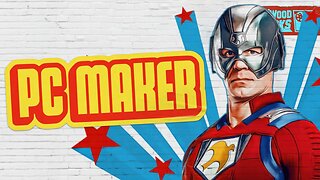Premium Only Content

Pencil art tips
Pencil art is a versatile and rewarding medium that allows artists to create intricate and detailed drawings. Whether you're a beginner or a seasoned artist, these pencil art tips will help you enhance your skills and create stunning artwork.
Start with Basic Shapes: When beginning a pencil drawing, it's helpful to start with basic shapes. Sketching simple circles, squares, and triangles can serve as a foundation for more complex subjects.
Choose the Right Pencils: Pencils come in various grades, ranging from hard (H) to soft (B). Hard pencils create lighter lines, ideal for sketching, while soft pencils produce darker lines, perfect for shading. Experiment with different grades to understand their effects.
Practice Shading Techniques: Shading is crucial in pencil art as it adds depth and dimension to your drawings. Practice various shading techniques like hatching, cross-hatching, stippling, and blending to achieve different textures and tones.
Use High-Quality Paper: Invest in good-quality drawing paper that can handle multiple layers of pencil work without smudging or tearing. Textured paper can add interesting effects to your drawings.
Work from Light to Dark: Start your pencil drawings with light strokes and gradually build up the darkness as you add more layers. This approach allows you to make adjustments and achieve a more realistic appearance.
Study Perspective and Proportions: Understanding perspective and proportions is essential for creating accurate and realistic drawings. Study the relationship between objects in space to make your artwork more convincing.
Pay Attention to Detail: Observing and capturing fine details can elevate your pencil art. Focus on textures, patterns, and small elements that make your subject unique.
Blend with Care: Blending can smoothen your shading and create seamless transitions. Use blending stumps, tissue, or even your finger to blend, but be cautious not to overdo it, as it can result in a loss of texture.
Use Erasers Strategically: Erasers are essential tools for correcting mistakes and adding highlights. Use a kneaded eraser for subtle corrections and a precision eraser for fine details.
Create Contrast: Contrast is key to making your drawings stand out. Combine light and dark areas to create a striking visual impact.
Experiment with Different Textures: Pencil art allows you to experiment with various textures. Try cross-hatching for a rough texture, or use a softer pencil for smooth gradients.
Study from References: Drawing from real-life objects, photographs, or other artwork can help you understand different subjects and improve your skills.
Develop Your Own Style: While learning from others is valuable, developing your own unique style sets you apart as an artist. Embrace your creativity and experiment with new techniques.
Patience and Perseverance: Pencil art demands patience and practice. Don't be discouraged by mistakes; they are opportunities to learn and improve.
-
 2:34:01
2:34:01
Steven Crowder
3 hours agoBREAKING: Minnesota Catholic School Shooting Update - Shooter & Manifesto
269K314 -
 DVR
DVR
Stephen Gardner
1 hour ago🚨CHICAGO Mayor PISSED as Residents BEG Trump to send National Guard
9.23K -
 LIVE
LIVE
The HotSeat
1 hour agoChristian School Shooting in Minnesota – Faith Under Fire & Prophecy Being Fulfilled
713 watching -
 LIVE
LIVE
Film Threat
16 hours agoPEACEMAKER BLOWS GUNN'S DC! PLUS ALIEN: EARTH AND DEXTER RESURRECTION | Hollywood on the Rocks
73 watching -
 1:05:34
1:05:34
The Kevin Trudeau Show Limitless
6 hours agoKevin Trudeau Uncensored The Untold Story Of Wealth, Health & Business Success
2.77K -
 LIVE
LIVE
StoneMountain64
4 hours agoHUNTING FOR THE FIRST WIN BACK ON WARZONE
417 watching -
 1:08:28
1:08:28
Jeff Ahern
2 hours ago $0.62 earnedNever woke Wednesday with Jeff Ahern
17.7K -
 4:38
4:38
Michael Heaver
6 hours agoBetrayed UK Reaches CRITICAL Moment
19.3K11 -
 39:13
39:13
SGT Report
18 hours agoAMERICA'S ZIMBABWE FUTURE -- Guy Gotslak
40.1K24 -
 1:13:02
1:13:02
Simply Bitcoin
5 hours ago $4.59 earnedINSIDER CONFIRMS 1M Bitcoin Buy INCOMING!! | EP 1319
59.5K3